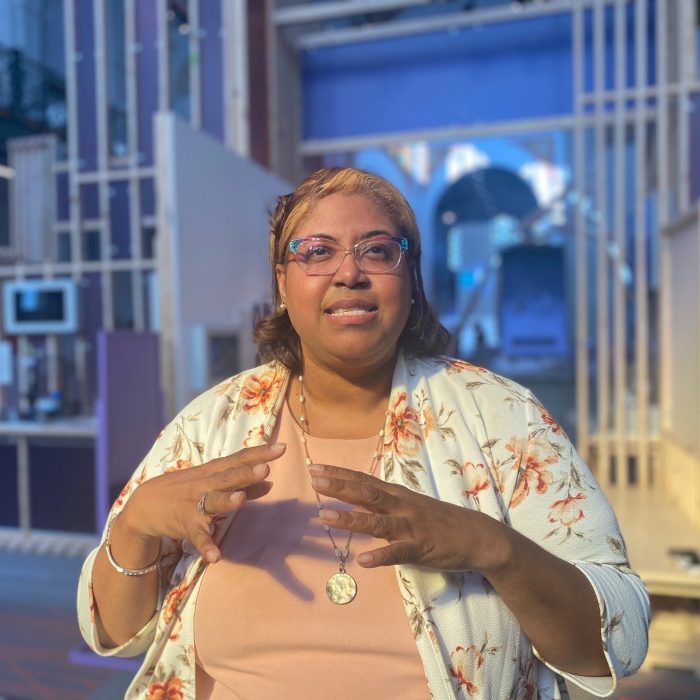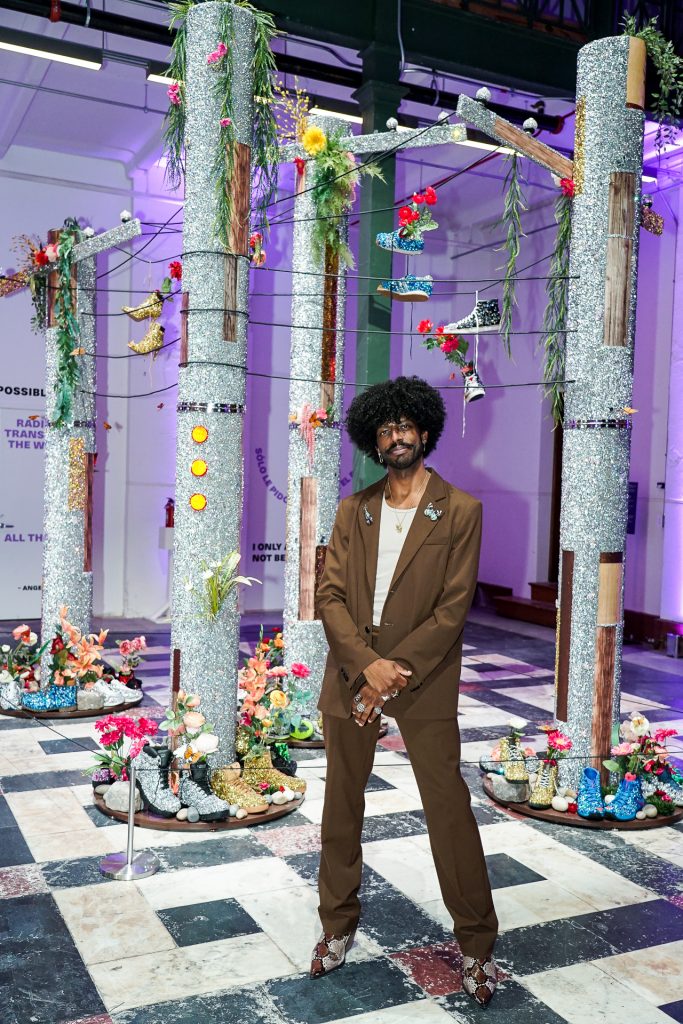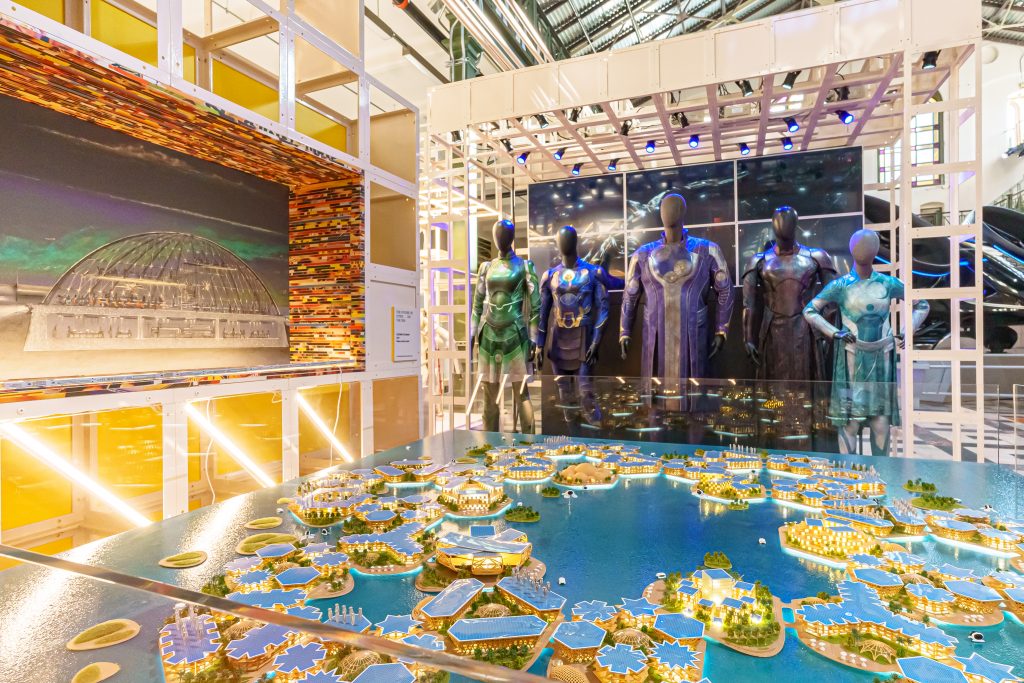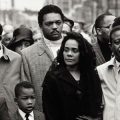Social Justice curator Monica Montgomery has big dreams
Montgomery spoke with the Torch about creating a more inclusive museum experience.
On a press tour prior to the November opening of the ambitious FUTURES exhibition at the Arts and Industries Building, Monica O. Montgomery strode to the side of the building facing Independence Avenue to show a visitor the way the light poured in through the southern windows, reflecting off the commissioned art installation, The Grove by Devin Shimoyama, a work conceived as a memorial to 2020 and the dual plagues of COVID-19 and racial injustice.
The sunshine might be seen as a metaphor for the overall tone of FUTURES, which Montgomery—in her capacity as social justice and special programs curator for the exhibition—helped to set.
Conveying a sense of “optimism about the future within our exhibit themes is important,” she says. “We reject the dystopian narrative and align with futures that are hopeful, equitable and sustainable.”
The Smithsonian has been an engine for futurism for 175 years, after all. FUTURES is a celebration of this legacy, she observes. “AIB director Rachel Goslins set our team’s focus on the futures we want, not the futures we fear.”

Montgomery—a Diversity, Equity and Inclusion consultant since 2016—has reason to be optimistic that the role of a social justice curator, who guides the development and execution of a museum exhibition with an eye toward equity and inclusion, will only expand across the field.
The role is “at the bleeding edge of museum practice,” she says, adding that she believes every museum needs a social justice curator “to look at what is happening in the world holistically and think about how that affects our audiences. We surface themes exploring the nuances of our humanity and our society, through a variety of touchpoints.”

Some of those touchpoints at FUTURES include:
- A feedback wall asks visitors at the exit what actions they are committing to take to ensure a better future;
- An exhibit entry wall displays a welcoming and belonging statement, a sustainability statement, and a land acknowledgement, honoring the Native Americans who lived on and stewarded the land where the Smithsonian now stands;
- An array of vibrant quotes painted on FUTURES’ walls, authored by such notables as astronomer Carl Sagan and Afrofuturist author Octavia Butler, that were crowdsourced by Smithsonian staff and contractors across dozens of units.
These and other intentional choices are everywhere within FUTURES’ five galleries, Montgomery says. More than 60 percent of the exhibit’s 150 collections, objects, art commissions, inventions and speculative technologies are created by, for, or about BIPOC (Black, Indigenous and People of Color), LGBTQ+, differently abled persons and the neuro-divergent. Underrepresented voices, when appropriate, are privileged over more established ones throughout the exhibition.

“A social justice curator can uplift and amplify voices of groups or themes that may (otherwise be) erased in the process of interpreting history or culture”, Montgomery says. The role might include advocacy in interpretation, consciousness-raising events, and inclusive strategies for engaging communities beyond the boundaries of the National Mall.
Montgomery recently curated Dr. Martin Luther King, Jr. Weekend programming, including a family day where kids can hear Dr. King’s speeches and practice his words and a screening of ‘Futures We Dream,’ plus community conversation premiering at the recently renovated D.C. Public Library’s flagship library, named for Dr. King. The film showcases stories of hope and resilience from everyday people making a difference across the country.
In the end, FUTURES aims not to be prescriptive with the tone about right or wrong or what will happen in the future; rather, it seeks to offer a thoughtful, ambitious menu of provocations, innovations, and speculations to come. Visitors are encouraged to imagine many futures, and to see themselves as future shapers, making decisions that affect the future we all share.
“If I had to compare FUTURES to a natural phenomenon, it would be the dawning of a new day,” Montgomery says. “Maybe I will eat a cricket brownie or travel environmentally sustainable routes, or there will be advancements that will benefit myself and my family. While you are here, you are dwelling in the realm of the possible.”
Posted: 18 January 2022
-
Categories:
Art and Design , Collaboration , Education, Access & Outreach , Feature Stories , History and Culture








